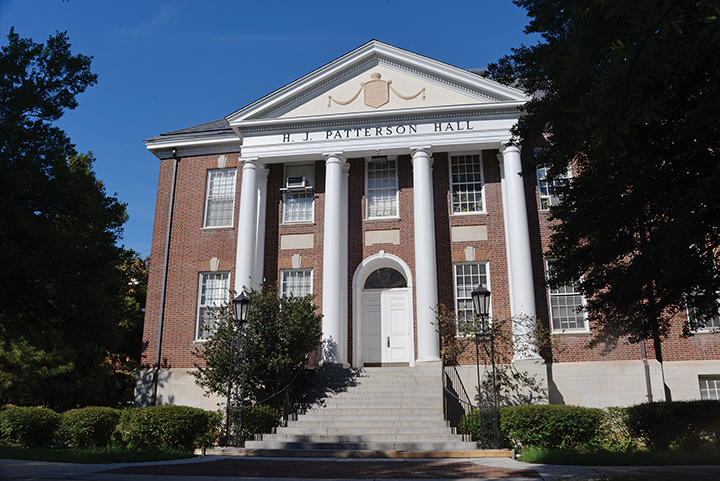After more than a year of construction, H.J. Patterson Hall will host a new “Global Crossroads” area where students and “the entire community at this university” can “celebrate international matters,” said Ross Lewin, associate vice president for International Affairs at the University of Maryland.
The building’s $18.6 million renovation of Wing 1, which was utilized by the College of Agriculture, has been under a “full gut” renovation since October 2015 and is scheduled to be finished by Thanksgiving, said Bill Olen, the university’s capital projects director. The construction includes upgrading windows, adding a new elevator, upgrading fire alarms, as well as adding new restrooms that meet the American Disability Act. All that is left of the renovation is inspection of the elevator, the architect’s inspection of the building for any deficiencies and the final cleaning of the space, Olen said.
However, upon reopening, the hall will feature a new area dedicated to international affairs on the campus.
The Global Crossroads area will be a place where students, faculty and staff may watch international sport events, signing of peace treaties or even a climate change accord, Lewin said. In addition to watching historic events on a large interactive screen, Lewin said he hopes the area will host student debates and feature global speakers.
This building will be the epicenter for international affairs on the campus, Lewin said. The area includes seminar rooms, language immersion rooms, offices and conferences rooms, Olen said. An international cafe will also be located on the first floor, which will be part of the Global Crossroads area. This area will be “a space for the entire community at this university to celebrate international matters,” Lewin said.
“If anyone has an idea for an event at the Global Crossroads, we will host it,” Lewin said. “We hope that this area can serve as a transformative space on campus.”
The first floor, besides having the Global Crossroads, will host the Education Abroad Offices and international student services. The Office of International Affairs and the Language Science Center will be located on the building’s second floor. Other language flagship programs will also be housed on the building’s third floor, the Israel Studies department will be on the fourth floor and the Latin Studies department may be located on that floor as well, Lewin said.
“By locating these entities in the center of campus, the university is making a positive statement about their importance,” Lewin said.
The building’s conference rooms will be unique because they double as global classrooms, which are part of the Global Classrooms Initiative, Lewin said. These rooms will have video screens where students can interact with a class from an international partner institution to work on group projects. This spring, there will be 13 of these classes across the campus, and the goal is to have two or three of them in this building, Lewin said.
The 79-year-old building hasn’t undergone moderate or extensive maintenance since 1967, according to Facilities Management’s building inventory. The majority of the space had never been renovated and has been in its original condition since 1937.
Furniture will be moved into the building in December, and all of the programs will move in during winter break, Olen said. The majority of them are moving from Susquehanna Hall and Taliaferro Hall. Dining Services has also begun installing its equipment into the new cafe.
In the future, Facilities Management plans to renovate the major mechanical systems in the basement of Wing 2.



